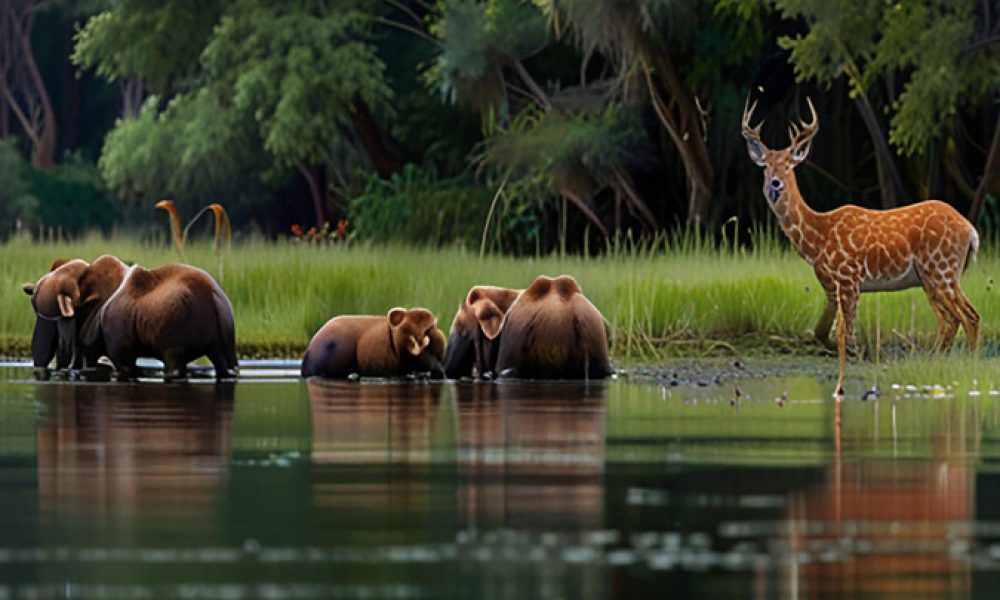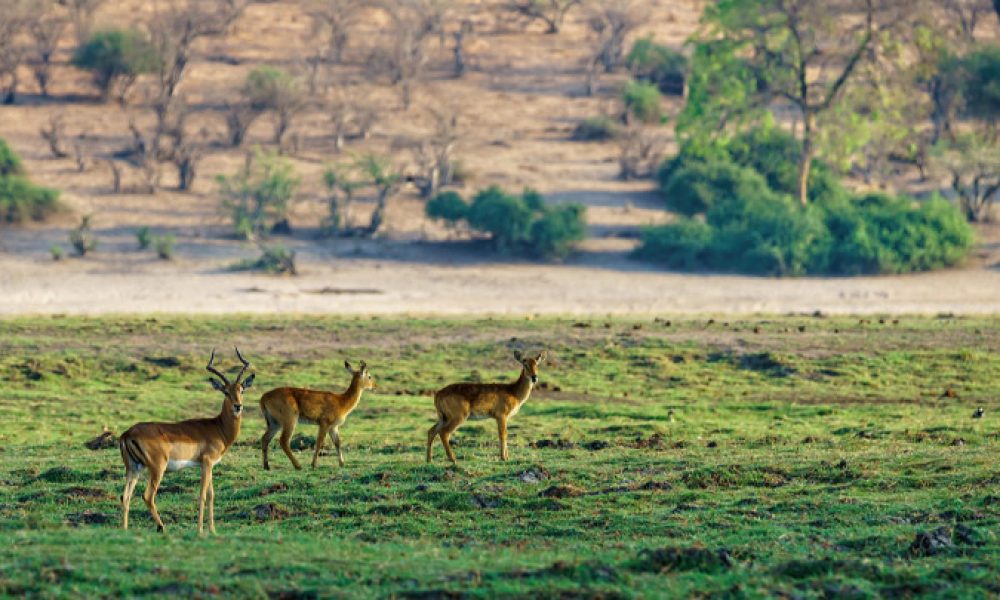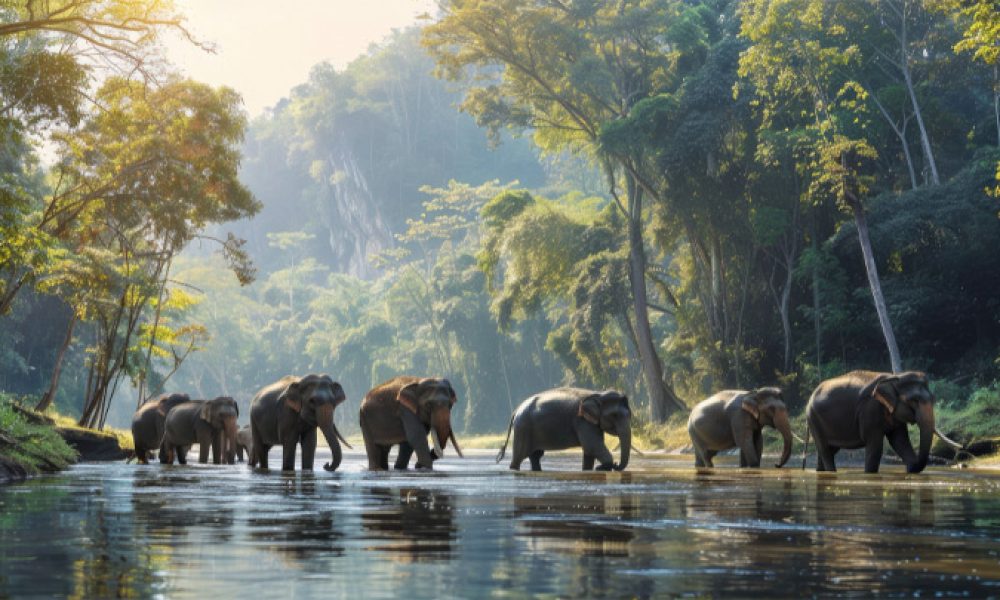Chinnara Wildlife Sanctuary is located in the beautiful environments of Kerala’s Idukki district. It is a sanctuary for ecology and natural beauty, providing a distinct wilderness escape. The sanctuary covers an area of 90.44 square kilometers and is home to various flora and fauna, many of which are rare and endangered. Among the numerous wildlife sanctuaries, Chinnar stands out as a unique destination that we will discuss in this blog. We will examine different aspects of the sanctuary, including its location, history, flora and fauna, attractions, and helpful tips for visitors. Whether you are a wildlife enthusiast, a nature lover, or someone in search of peace, Chinnara Wildlife Sanctuary offers something for everyone.

Location and Accessibility: How to Reach Chinnar Wildlife Sanctuary
Chinnara Wildlife Sanctuary can be found close to the Tamil Nadu border in Idukki district, Kerala. It is situated approximately 60 km away from the well-known hill station of Munnar, making it convenient for visitors. The sanctuary is part of the Western Ghats, which is recognized as a UNESCO World Heritage site celebrated for its abundant and diverse wildlife.
By Air
Cochin International Airport is the closest airport to Chinnar Wildlife Sanctuary, located approximately 150 kilometers from it. You have the option to hire a taxi or take a bus from the airport to get to the sanctuary.
By Train
The closest railway station is Aluva, which is approximately 140 kilometers away from Chinnar. You can hire a taxi or take a bus from the railway station to get to the sanctuary.
By Road
Chinnar Wildlife Sanctuary has good road connections. Visitors can reach the sanctuary by car or bus from Munnar, a well-known tourist spot. The journey from Munnar to Chinnar offers beautiful views, displaying tea plantations and rolling hills, which makes the trip just as pleasurable as arriving at the sanctuary.
A Glimpse into the History and Significance of Chinnar Wildlife Sanctuary
The Chinnar Wildlife Sanctuary was designated as a protected area in 1984 due to its ecological significance and the necessity to safeguard its unique biodiversity. The sanctuary is located in the Western Ghats, one of the world’s eight ecological hotspots, which boasts a large variety of species, many of which are native to this region. The Chinnar River, which flows through the sanctuary, is the primary water source for the wildlife and plants found here. One of the factors that makes Chinnar distinct is its varied geography and climate. Unlike other tropical regions of Kerala, Chinnar is situated in a rain shadow area, leading to a unique ecosystem characterized by dry deciduous forests, mossy forests, and riverbank forests. This ecological diversity supports a wide array of flora and fauna, making Chinnar a essential site for conservation and research.
Flora: A Botanical Wonderland
The Chinnar Wildlife Sanctuary features a diverse range of flora, many of which are well-suited to the region’s rainfall patterns. The predominant vegetation in the sanctuary is dry deciduous forest, which includes species such as teak, rosewood, and sandalwood. Besides, there are mossy coniferous forests, characterized by soils that support Acacia, Euphorbia, and Cassia species in snowy areas.A distinctive aspect of Chinnar’s flora is the riparian forest found along the banks of the Pambar River that runs through the sanctuary. This forest is lush and bright, offering a stark contrast to the drier regions of the sanctuary. Riparian forests provide a habitat for various plants, including bamboo, tamarind, and wild fig, promoting a energetic ecosystem that attracts numerous wildlife species. Chinnar is also home to rare and endangered plants, which makes it a critical location for botanical research and conservation efforts. The vegetation within the sanctuary not only is a habitat for wildlife but also plays a important role in sustaining the area’s ecological balance.
Fauna: A Wildlife Enthusiast's Paradise
The Chinner Wildlife Sanctuary is home to a diverse range of wildlife, much like its rich variety of plant life. A wide array of mammals, birds, reptiles, and insects inhabit the sanctuary. Chinner is particularly renowned for its Grizzled Giant Squirrel (Ratufa macroura), which is critically endangered and native to the South Western Ghats.
Mammals
Chinnar is a habitat for many large mammals, including the Indian leopard, Bengal tiger, and gaur (Indian bison). These remarkable species often attract tourists, but the sanctuary also hosts various small mammals such as sambar deer, spotted deer, wild boar, and Hanuman langur. A unique goat that can be found in Chinnar is the Nilgiri Tahr, which is a rare and endangered mountain goat native to the Western Ghats. These fragile animals are commonly seen on the sanctuary’s cliffs, and Chinnar is one of the rare locations where they can be observed in their natural habitat.
Birds
Chinnar Wildlife Sanctuary is an ideal destination for bird enthusiasts, featuring more than 225 bird species recorded within its boundaries. Some of the noteworthy species include the Indian Peacock, Malabar Whistler, Crested Snake Eagle, and Gray Jungle Bird. The diverse habitats within the sanctuary provide various birdwatching experiences, from dry forest slopes to bright riparian zones.
Reptiles and Amphibians
Chinnar Wildlife Sanctuary hosts a diverse range of reptiles, including the endangered Indian Star Turtle. The dry conditions of the sanctuary provide an ideal habitat for reptiles such as the King Cobra, Indian Rock Python, and Monitor Lizard. What’s more, the Pamber River and the nearby wetlands are home to various amphibian species, which makes Chinnar a important nursery area.
Insects and Butterflies
The sanctuary is full of live insects, including many colorful butterflies that bring vibrancy and life to the area. Among the notable butterfly species are the Malabar-striped swallowtail, the Malabar tree nymph, and the common rose. These insects, along with others, play a essential role in maintaining the ecological balance of the sanctuary.
Top Attractions in Chinnar Wildlife Sanctuary

Chinnar Wildlife Sanctuary presents a variety of attractions and activities for its visitors.
1. Trekking and Nature Walks
One of the best ways to discover the Chinner is by hiking. The sanctuary offers a variety of hiking trails that lead to different locations, allowing visitors to see wildlife and appreciate stunning views. The most popular trail takes you to the breathtaking Thuwanam Falls, a remarkable waterfall located deep within the sanctuary. Although the hike to the falls can be challenging, it is rewarding, especially with opportunities to view wildlife along the journey. For those seeking a more leisurely experience, guided nature walks are available. These tours are conducted by knowledgeable naturalists who share valuable information about the plants, animals, and ecosystems within the sanctuary. Hiking is an excellent way to gain an understanding of the often neglected details of the sanctuary’s ecosystem.
2. Thoovanam Waterfalls
Thoovanam Waterfalls is a stunning natural feature within Chinnar Wildlife Sanctuary. The falls are situated along the Pambar River and can be accessed by a trekking trail that typically takes about two to three hours to finish. The view of the water cascading down, framed by lush greenery, is truly engaging. The area surrounding the falls is an ideal spot for a picnic or a refreshing swim in the cool waters.
3. Watchtowers and Wildlife Viewing
Chinnar features a number of watchtowers that are strategically placed throughout the sanctuary, allowing visitors to observe wildlife in their natural environment. These watchtowers are especially favored for viewing elephants, deer, and other large mammals, particularly during the early morning or late evening hours.
4. Tribal Villages
Chinnar Wildlife Sanctuary is inhabited by several indigenous tribal communities, such as the Muthuvans and the Hill Pulayas. These groups have coexisted with nature for many centuries, and a visit to their villages provides insight into their traditional lifestyles. Certain trekking routes lead through these villages, enabling visitors to engage with the locals and discover their cultural practices and customs.
5. Interpretation Center
The Interpretation Center at Chinnar Wildlife Sanctuary offers essential information about the area’s biodiversity, conservation initiatives, and the significance of safeguarding the Western Ghats. The center features displays on the sanctuary’s plants and animals, along with educational resources for guests. It is an excellent starting point for your visit, providing insights into the ecological importance of the sanctuary.

Best Time to Visit Chinnar Wildlife Sanctuary
Chinnar Wildlife Sanctuary is open for visits year-round, but the ideal time to go is during the winter months, specifically from December to February. During this period, the weather is cool and pleasant, which makes it perfect for trekking, wildlife observation, and exploring the sanctuary’s natural attractions. Drought conditions during this time also increase the chances of spotting wildlife, as animals gather near water sources. The winter months (March to May) can be hot and dry, yet they still provide excellent opportunities for wildlife viewing, as reduced water levels compel animals to come to the remaining water supplies. The rainy season (June to September) brings heavy rainfall to the region, making travel challenging and reducing wildlife visibility. However, this season can enhance the sanctuary’s lush greenery, making it a worthwhile time for nature enthusiasts to visit the area.
Accommodation Options Near Chinnar Wildlife Sanctuary
Multiple accommodation choices are accessible near Chinnar Wildlife Sanctuary, including budget-friendly guesthouses, eco-lodges, and resorts.
1. Eco-Lodges and Treehouses
For a distinct and immersive experience, you might want to stay at one of the eco-lodges or treehouses situated within or nearby the sanctuary. These lodging options are crafted to harmonize with the natural environment and provide an opportunity to engage with the wilderness closely. Spending the night in a treehouse or eco-lodge is a memorable experience, surrounded by the sights and sounds of the forest.
2. Resorts
The nearest railway station to Munnar is in Aluva, approximately 110 kilometers away. From Aluva, you can hire a taxi or take a bus to Munnar.
3. Guesthouses and Homestays
If you are looking for a more affordable choice, think about staying at one of the guesthouses or homestays located in the nearby towns of Marayoor or Munnar. These places provide essential amenities and an opportunity to enjoy local hospitality.
Tips for Visiting Chinnar Wildlife Sanctuary
- Carry Sufficient Water and Snacks: While there are some facilities within the sanctuary, it’s a good idea to carry your own water and snacks, especially if you plan to go trekking or exploring.
- Wear Comfortable Clothing and Footwear: The terrain in Chinnar can be rugged, so wear comfortable clothing and sturdy footwear suitable for trekking.
- Respect Wildlife: Maintain a safe distance from wildlife and avoid feeding or disturbing animals. Respect the sanctuary’s rules and guidelines to ensure a safe and enjoyable visit.
- Book in Advance: If you plan to stay at an eco-lodge or resort, book your accommodation in advance to avoid disappointment, especially during peak tourist seasons.
- Hire a Local Guide: To enhance your experience and gain insights into the sanctuary’s biodiversity, consider hiring a local guide for trekking and wildlife viewing.
- Check Weather Conditions: Before your visit, check the weather conditions to ensure you are prepared for any changes in the weather.
Conclusion
Chinnar Wildlife Sanctuary is a hidden treasure located in the wilds of Kerala. It offers a remarkable combination of natural beauty, rich ecology, and cultural heritage. Whether you are passionate about wildlife, enjoy nature, or are simply seeking a tranquil retreat, Chinnar has something special to offer. The sanctuary features diverse flora and fauna, picturesque hiking trails, and chances to examine tribal culture. A visit to Chinnar Wildlife Sanctuary guarantees an unforgettable experience. Make plans to visit this stunning sanctuary and immerse yourself in the wonders of nature in one of Kerala’s most beautiful locations.